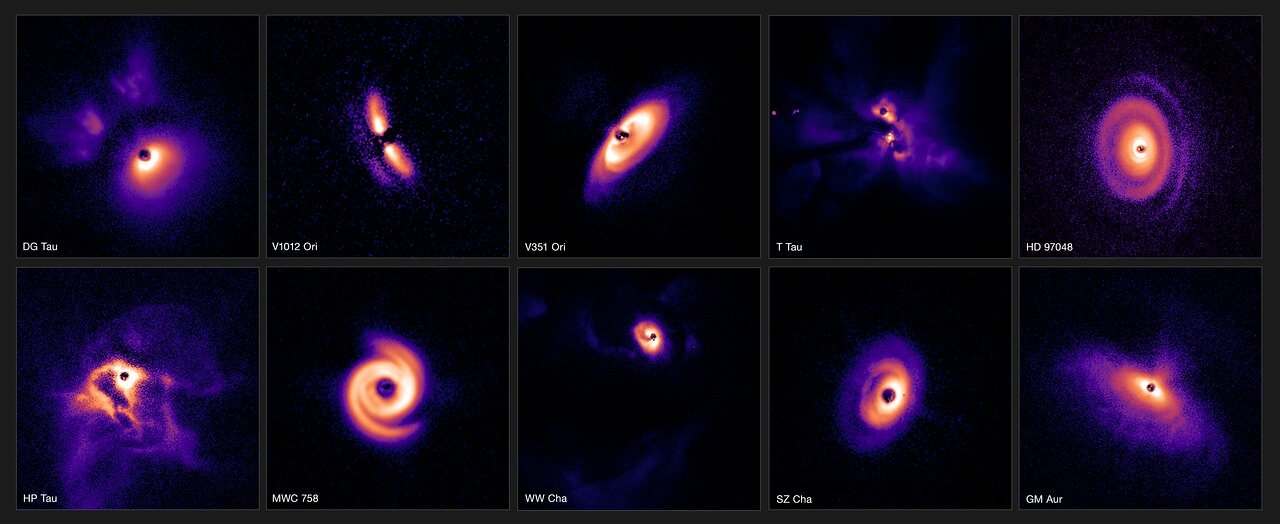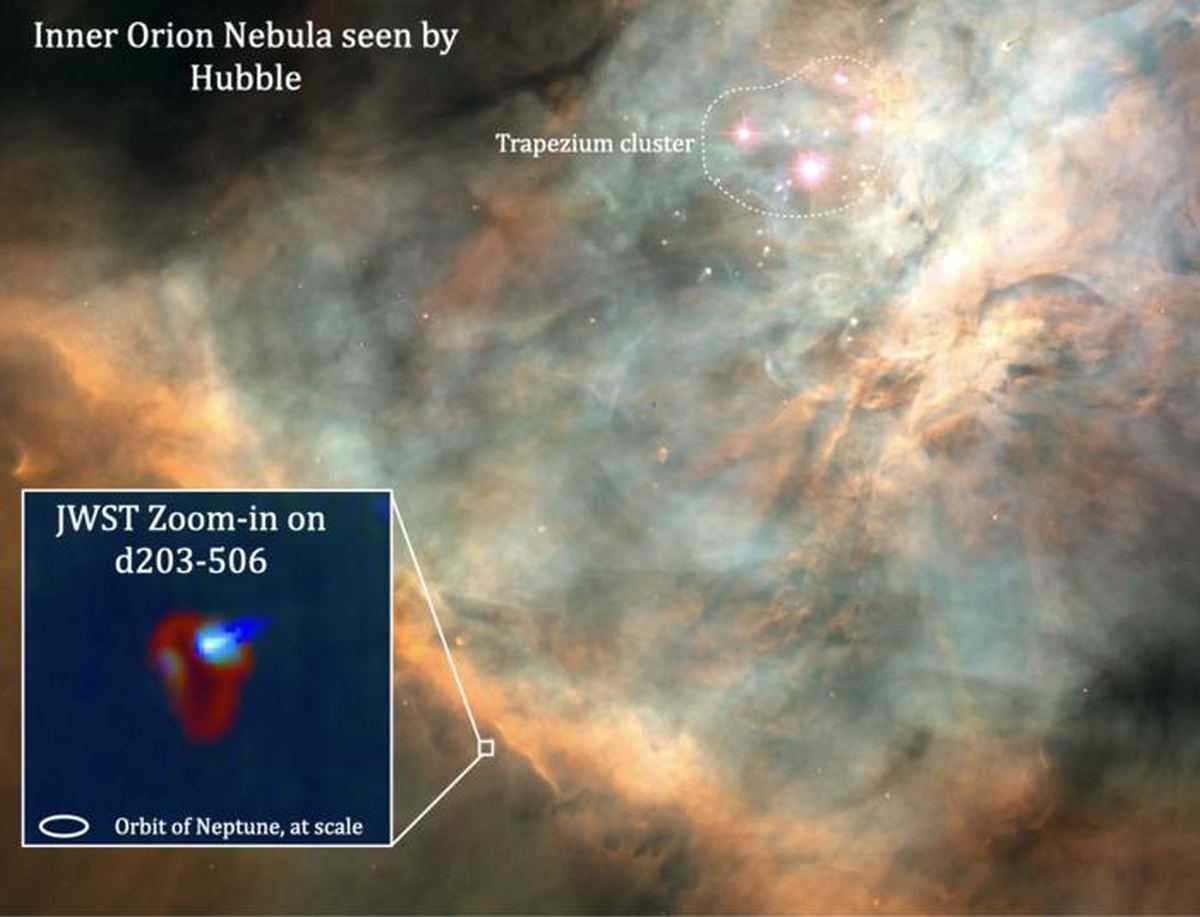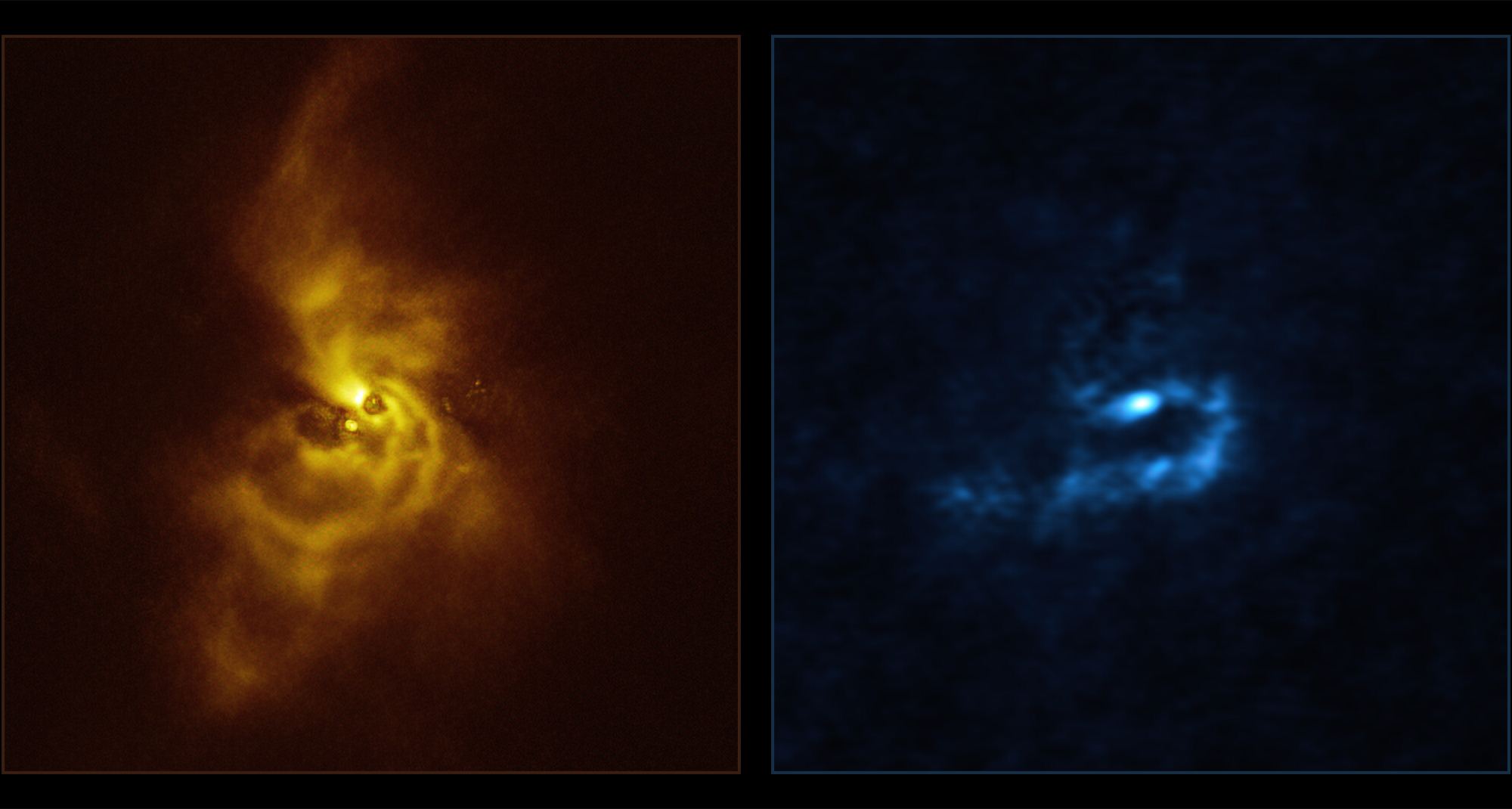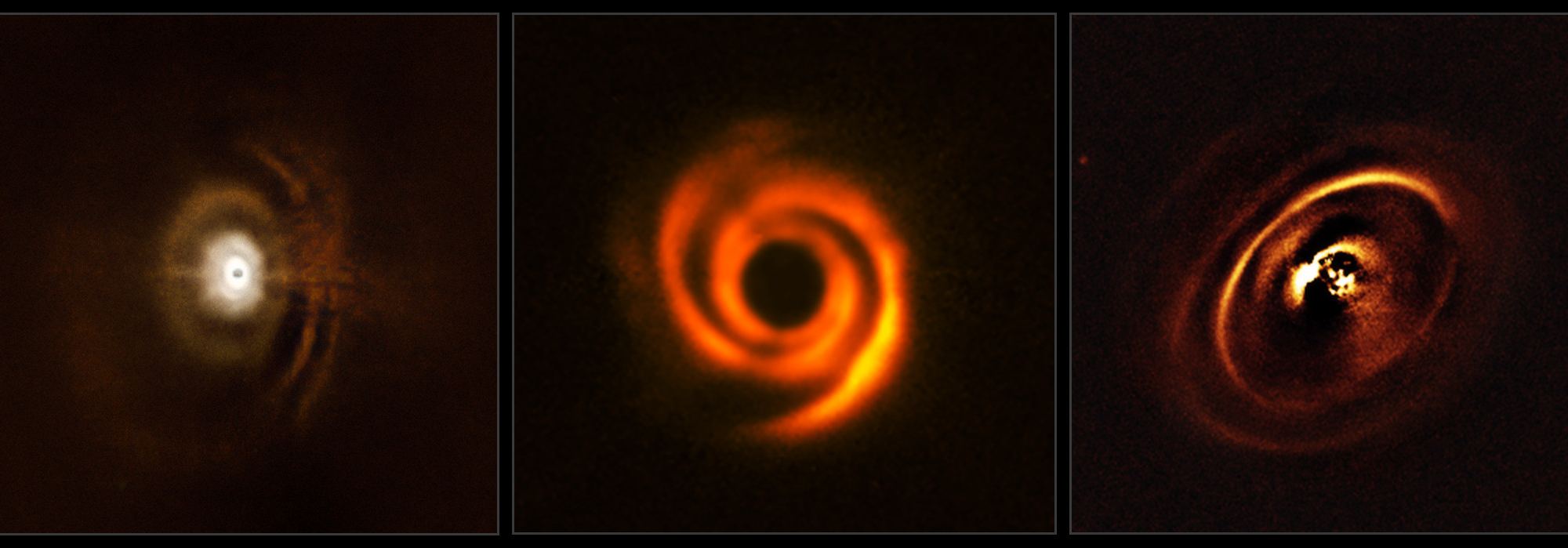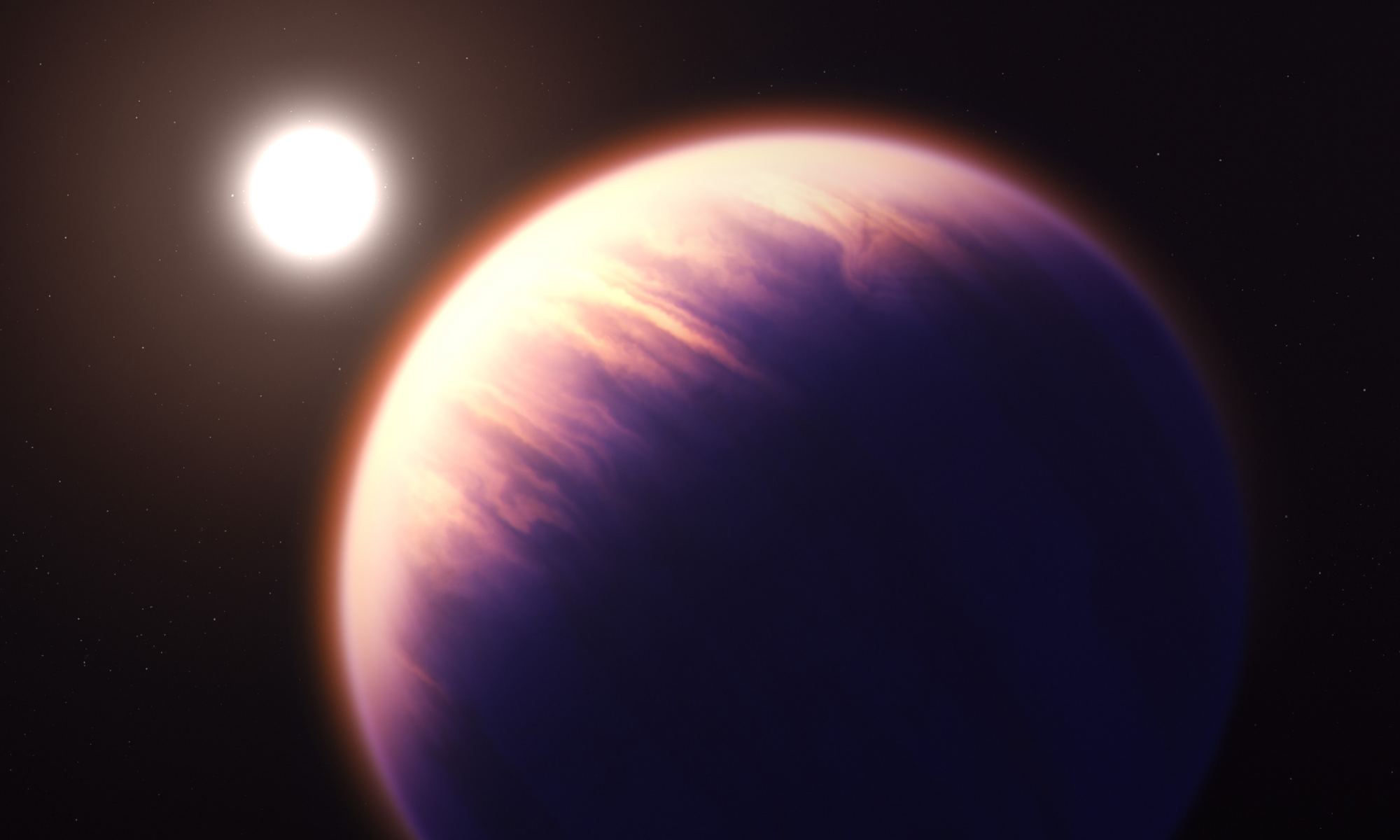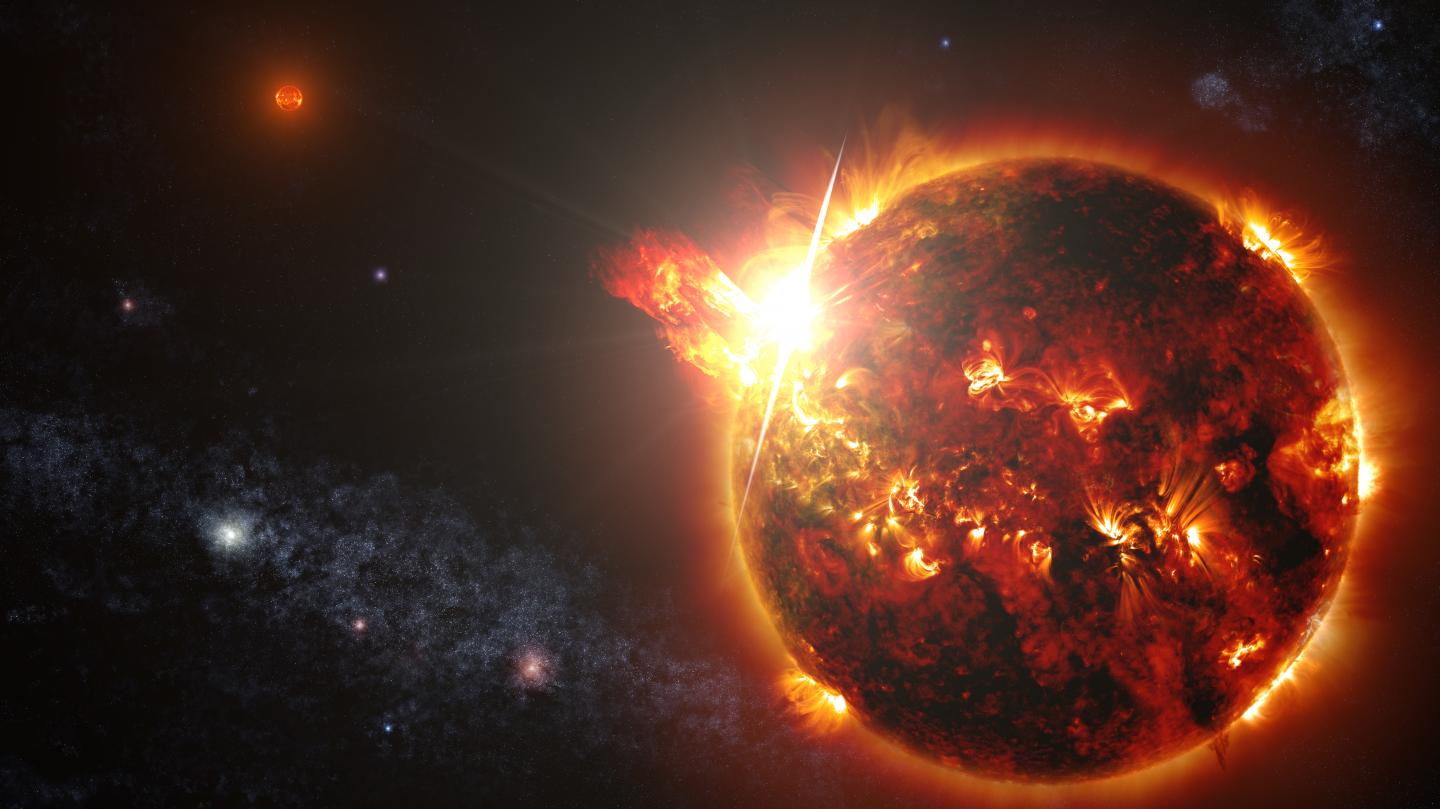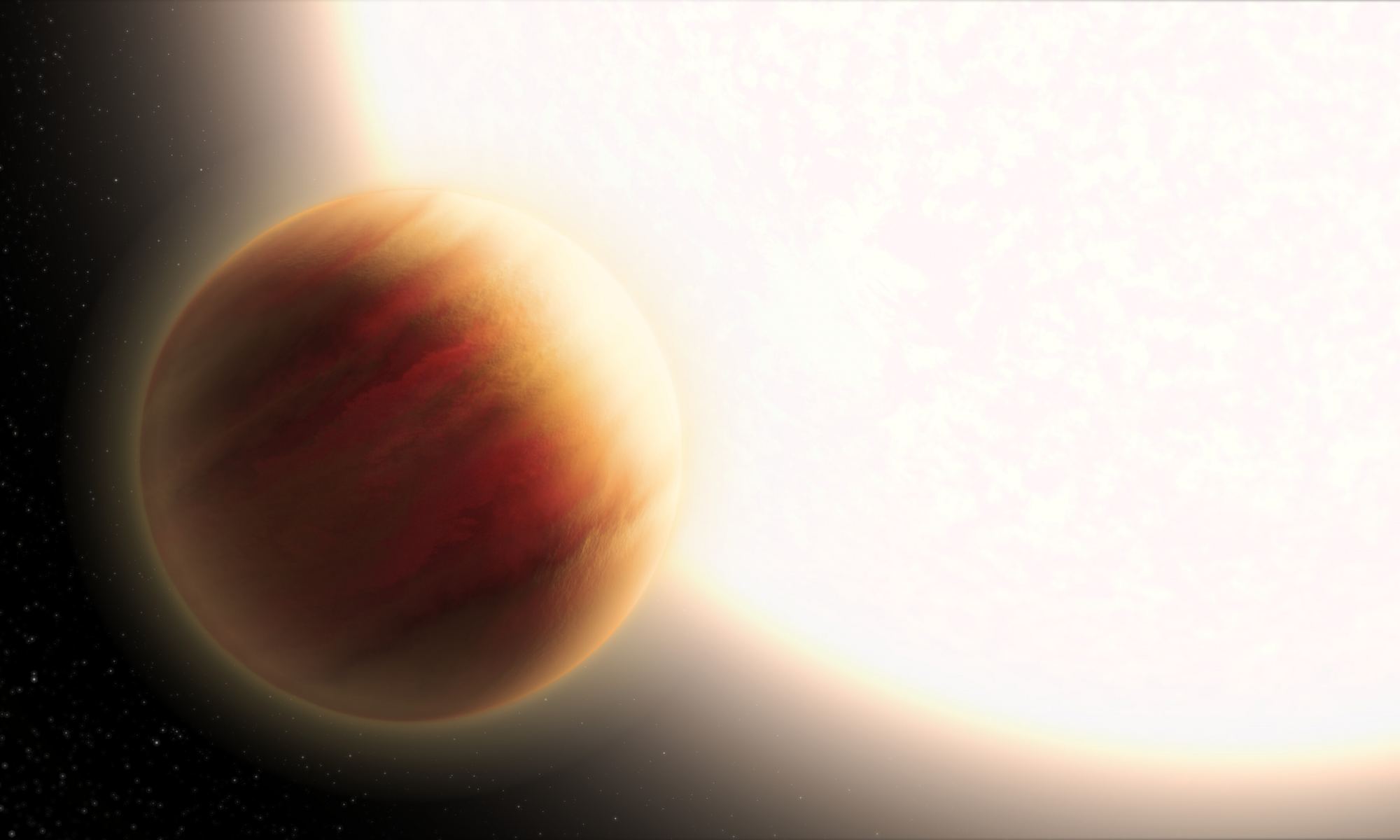Astronomers using the Very Large Telescope in Chile have now completed one of the largest surveys ever to hunt for planet-forming discs. They were able to find dozens of dusty regions around young stars, directly imaging the swirling gas and dust which hints at the locations of these new worlds.
Just like the wide variety in the types of exoplanets that have been discovered, these new data and stunning images show how protoplanetary systems are surprisingly diverse, with different sizes and shapes of disks.
In research presented in three new papers, researchers imaged 86 young stars and found 62 of them had a wide range of star-forming regions surrounding them. The astronomers say this study provides a wealth of data and unique insights into how planets arise in different regions of our galaxy.
Continue reading “Astronomers Image 62 Newly-Forming Planetary Systems”
